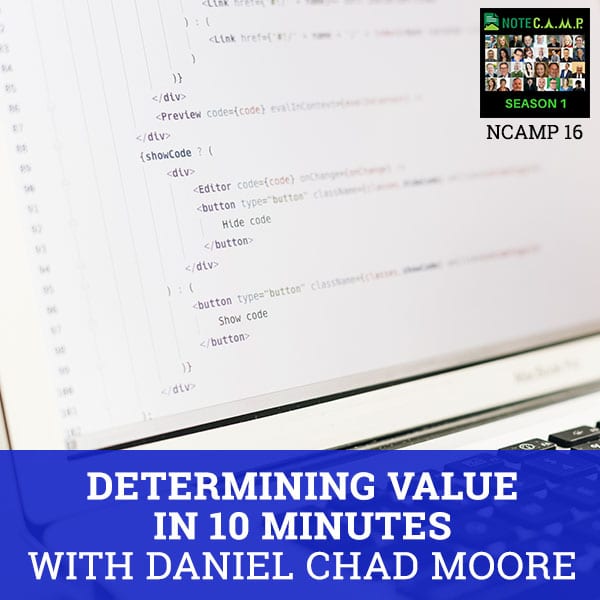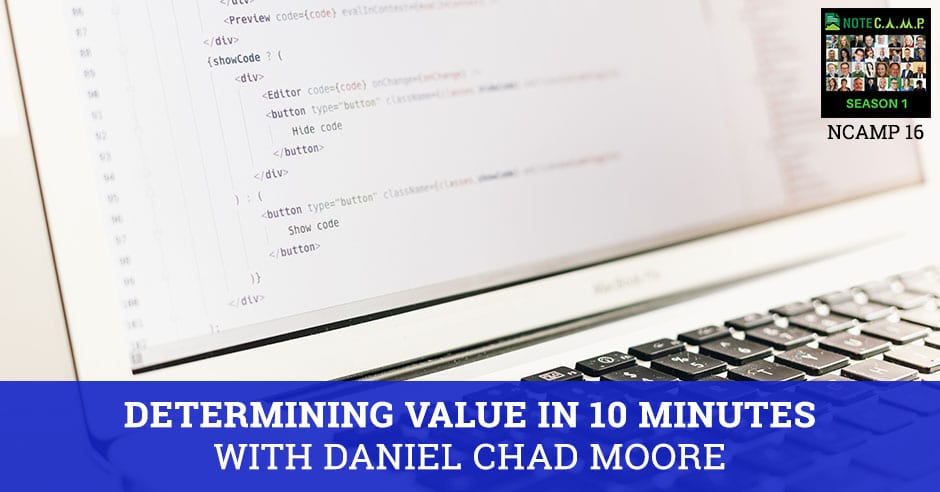
As Managing Director of Real Softworks, LLC, Daniel Moore is an expert in determining value for assets and talks about how to work out what a house is worth in five to ten minutes. David started investing in real estate at 23 years old. After losing a lot of money on a property, he sought out a mentor, and in less than six months was able to get out of the rat race and received the Rich Dad Hall of Fame for 2012 for being able to turn the situation around so soon. Since then, he’s become a full time investor for about seven years now. David talks about how to evaluate the value of a property quickly using time-tested formulas to help you out, specifically comparable market analysis which he’s been using to determine the value of a property at any given point in time.
Listen to the podcast here:
Determining Value in 10 Minutes with Daniel Chad Moore
I’m here with Daniel Moore. He’s the Managing Director of Real Softworks, LLC. He’s out of Dallas. He’s talking about how to determine what a house is worth in five minutes. He is a huge talent at solving Rubik’s cubes as a hobby. Algorithms for that, algorithms for figuring out comps, houses and things like that. Daniel, I will turn it over to you and we’ll get started.
Thank you so much. A quick introduction to who I am and a little bit of my background. I started investing in real estate at the age of 23 years old. I bought my first rehab when I was 23. I turned around and sold it, clearing almost six figures on my first deal. Roll that into two or three more properties back-to-back, almost doubled it inside of two years. I hit a property that I lost a lot of money on and that one property taught me quite a bit about everything. I went out, sought out a mentor, teamed up with Robert Kiyosaki’s Rich Dad Education. In less than six months I was able to get out of the rat race and received the Rich Dad Hall of Fame for 2012 for being able to get out of the rat race so soon. Since then, I’ve become a full-time investor now for about six years, seven years. I’ve done multi-million-dollar new construction and knocked down commercial projects. I’ve done sub twos reps, owner-financed notes. I’ve done rehabs and rentals. I’ve done quite a bit of different types of investing. What I’m going to focus in on is how to evaluate the value of a property quickly using relatively time-tested formulas to help you out. What is a comparable market analysis? This is what we’re going to use to determine the value of a property at any given point in time. One of the things that we need to take into consideration is that it is an opinion or an estimate of the most probable price in a competitive and open market.
If I asked everybody to go out and give me a value for 123Main Street, I’m going to get varying response back from everybody. Not everybody’s going to think the exact same thing. What the CMA is going to produce is an opinion of the most probable price in a competitive and open market. We have three different ways to come up with this value. One of them being the income approach, which takes a look at the receivable net operating income of the property, and then based upon somebody’s desired return comes up with a value. This is reserved predominantly for cash flow in commercial real estate and for single family buyers. This isn’t a type of approach that you’re normally going to use. I’m going to focus in on what we’re looking at on single family side. Another approach is the cost approach, typically reserved for non-cash flowing commercial properties or rural single family properties that are hard to comp using the comparable analysis strategy. It looks at what would it take to rebuild that property and depreciate that property for any issues that it may be currently having, any defects of functional obsolescence or anything else like that. Cost approach is reserved for non-cashflowing commercial properties like charitable organizations like churches, schools, government buildings.

Determining Value For Assets: Markets change, cycles move.
The comparable sales approach is used almost exclusively in analyzing single family homes. We’re going to break this system down for you. Whenever I’m looking to analyze a single family property to determine the value of it, there’s going to be five of the top things that I always want to look for. That is going to be square footage, typically trying to find properties that are plus or minus 20% of the property square footage. If I’ve got 1,000 square-feet home, I’m looking for properties that are within 800 to 1,200 square feet. The closer I can get it to that subject property square footage, the better the comp will be. If I get them closer to the 10% mark, that is what I would prefer. These are generalities that can help you stay safe whenever you are out there looking to analyze your properties. Another thing that I’m going to look for is the year built of the home. On average, I’m going to look for a property built plus or minus five years of the subject property. The closer to the age of the subject property that I can find, the better I would consider that to be, but we can go up or down plus or minus five years and this is generalities. This is not set in stone type of stuff. Some basic things that I’m trying to put out there keep you safe when analyzing a property. I don’t want to compare a 2018 home to a 1928 home. They’re not going to be the same. I’m also looking for essentially the configuration of the home. If I got a two bed, one bath, one car garage, that might not be comparable to a three bed, two bath, two car garage. I’m going to look for a configuration that is similar in style.
Subdivision versus distance. I’m looking for comparable properties that are geographically close to the subject property, preferably within the same subdivision. Subdivision being a unit of measurement, smaller than a zip code, but bigger than your average street and balance. I’m looking for properties preferably within a quarter mile. As I start getting into rural areas, not such densely populated urban areas. I might have to adjust that up a little bit, but I want properties nearby. If I’m investing here in Dallas, Fort Worth, you can go a mile and be in a completely different neighborhood. It’s not even comparable, but if you start doing rural comps, you may have to go out a little bit further. Another one that I’m always going to look for being in the top five that I must know is the properties I’m comparing it to recently sold. Markets change, cycles move. I need to find something preferably in the last 90 days, at max the last 180 days, but I’m looking for homes that have sold in the recent market. Preferably in the last 90 days. Let’s take a look at this process real quick. I’m going to give you an example of breaking down that process for you.
Step one, I’m going to find and evaluate at least three recently sold properties that are similar in location, type, size, age, and quality. I want to find three of the more data points that I have in front of me, the easier it is for me to create a solid comparable market analysis. The less data that I’m using, the more arbitrary or subjective the value may be. If I have no properties that have sold nearby recently, then I have to start going further out in time, further out in distance. The more that I do that, the more subjective that value may be. I always try and find as many data points as I can to address and calculate my value. Step two, I’m going to determine the average price per square foot of comparable sales. If I’ve got a house that sold for $100,000 and it was 1,000 square foot house, I know that home sold for $100 per foot. That’s similar when you’re going out and buying gas. If we’re in my area, gas is around $2.49 a gallon. I now know that per gallon, that’s what I’m going to pay for. It’s very similar in real estate. If I know I’m getting 1,000 square foot house and I’m comping a 1,100 square foot house, I need to figure out what I’m paying for that house per foot, so I can determine what the value will be.
Step three, I need to make adjustments to sold prices of comparable homes for items such as fireplaces, pools, the age of the home, the lot size, number and type of rooms, amenities, etc. This becomes more important whenever your comparable homes that you’re finding that had been recently sold in the nearby market have some little variances between your property, the subject property, and the comparable property. If my house doesn’t have a pool and the house that I’m comping it to does have a pool, I need to sit back and determine how much value that pool added to my property? I can use that by looking at more data to determine if that pool caused that home to sell for more than what my subject property would. Step four, I’m going to multiply the square footage of the subject property to the average price per square foot of comparable sales. If I had three homes also per $100,000 and they’re all 1,000 square foot each, I know that homes in that area of that similar configuration sell for $100 a foot. If my home has, let’s say 1,100 feet, then I could probably assume my home’s going to sell for around $110,000.I’m giving you some general guidelines on how to build this out and put this together.
I’m going to give you a quick example of how to run these numbers. I’ve got a subject property here. I’m going to call it a three-bed, two-bath, two car garage home built in 1979 at 1,376 square feet. I would find this information out by looking at the Central Appraisal District. The Central Appraisal District should give me all of this information that I need to confirm this with the homeowner if I am able to. Sometimes we have unpermitted additions added to homes. We have some configuration changes done to the home. Little things like that that we should confirm if we can. To give you a quick example, I’m looking for comparable homes. In this particular situation, the unit configuration of the house is similar to my subject property. They’re both three-bed, two-bath, two car garages, and they’re within five years of each other. This one in particular is within a year of the subject property and it’s 1,318 square feet. Meaning it is within my 20% range and I feel comfortable using this as a comparable home. Comparable property, once again similar scenario, same beds, baths and garages, similar year built, and within the square footage tolerance that I’m okay with. My third but not last is going to be another one. 1980, it’s only one year newer, but it is about 150 square-foot smaller, but it is within the 20% that I’m looking for. If I can find it within 10%, I’ll be much happier.
Now what I need to do is divide the sales price of the property by the square footage and then I’m going to add the price per square foot and divide by the number of homes is going to equal to the average price per square foot. If I take $114,000 and I divide it by $1,318, I’m going to get $86.49per foot. If I take this one and this one and do the same thing and divide it by the square footage of the property, I am now going to get the price per square foot that home sold for. If I take all three of these together and then divide by the number of homes, I’m going to get an $86.66price per square foot of the square footage of the subject times the square footage of the subject property. I have 1,376 square feet and times the price per square foot here, I’m going to come up with a retail value of approximately$119,000. With that being said, this is an estimated value.
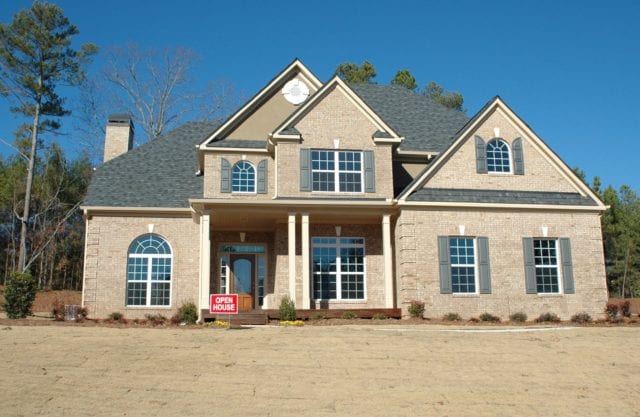
Determining Value For Assets: The only way to truly know what a home is worth is sell it on a fair and open market.
The only way to truly know what a home is worth is sell it on a fair and open market. From the homes that have recently sold, I can come up with an educated and calculated guess as to what this is going to be based on data. Some true data that we’ve found in the market. Some things that I truly need to express to everybody paying attention right now, that this is an art and it is not an exact science. There’s no way that I can sit here and speak about these things in absolute truths because from market to market, submarket to submarket and from area to area, things change. We may go to Baltimore, Maryland where we have to comp a 1970 with a 1920.We may go into some areas where train tracks. If I’m in DFW in a home backed up to a train track, it is more than likely going to negatively affect the value of that home. If I’m in Baltimore, an area where mass transit is extremely desired because of the limited parking in the other areas, being close to the mass transit is a huge bonus for your retail value. The same thing goes with pools. Pools may add or subtract to the value, but as you become more and more familiar with your particular market, you will be able to understand some of the nuances that you need to be looking at to determine value.
There are other things that you need to consider when looking at the value of the property. This is going to be looking at this from a single family investor’s point of view. Maybe not so much from a note investor’s point of view, but some of these things I do want a place out there and keep in top of mind and that’s going to be highest and best use for the subject property. There are many neighborhoods throughout the United States that experience re-gentrification all the time. By re-gentrification, the revitalization of the neighborhood where we’re taking lower income homes, sprucing them up, cleaning them up, bulldozing them, and building new, different things. When we’re analyzing a property, we need to see what the overall neighborhood itself is doing. If I’m seeing 1920s neighborhood that has now all of a sudden seeing massive amounts of new construction, it might be worthwhile for me to take into consideration what the highest and best use for that property would be, that may be bulldozing and going for new.
Objectionable market stops is another thing that I need to take into consideration. What I mean there is no matter what, there’s going to be specific markets where you’re going to cap out with that home will be worth, no matter what you do to it. We may have a 5,000 square foot home, we paid $1 million plus to construct, and we’ve got $1 million plus worth of labor and material into the home, but I built it in a $100,000 neighborhood. No matter what I do to that home, that $1 million house is never going to sell because if somebody can afford to buy a $1 million home, they’re not going to buy that in a $100,000 neighborhood. I explained it like that to create such a drastic explanation of that particular phrase that I use there, but what I need to drill in is I see a lot of newer investors that will run comps on a house. It will be one of the largest homes in the neighborhood or some other offsetting factor that’s causing you to think that the home is worth more, but when you break it down, you don’t want to be probably more than 10% to 15% outside of the average cost of a home in that neighborhood. If all the homes in that neighborhood is averaging out sell for $150,000, don’t expect to get more than$165,000 for your house or that’s an arbitrary number, but definitely don’t think you’re going to sell at $250,000 house in a $150,000 neighborhood. You just need to put your thought processes together.
Other things to look at are the property type. This is a big one that you need to keep in top of mind. Don’t comp town homes to condos, condos to single family homes, and single family homes to mobile homes. Don’t do that. Don’t company lake view property to lake front property and don’t comp Victorians versus Queen Anne’s versus contemporary versus modern versus mid-century modern. You want to make sure that the property type is the same. I’m on Google Maps and I’m looking at the property from a Google Maps street. I need to make sure that it looks like the homes that I’m comping it to. You will get into some areas where you have an eclectic style of homes all within one small area. Make sure that you’re comparing apples to apples. Days on market for single family investor, at least a flipper is a key thing to take into consideration. How long do I anticipate that home to sit on the market before it finally sells? What’s the demand for this particular home? Schools are another thing that’s a hidden line on a map that you don’t directly see, but you do need to take into consideration. If you’re looking at property values and all of a sudden you crossover this one street and home values drop by 15% to 20% percent. What you may be coming into is a change of school zones. You can’t see that occur on the map, but it is occurring in. You do care where your kids go to school. Anybody looking to buy this real estate is going to care where their kids go to school as well and some schools are more desirable than others. Those are the little boundaries that are hidden that you may not directly see the effect of value.
Another thing that I like to make note of is the number of stories that a property has. I try to compare one story to one story, two to twos, threes to threes, so on and so forth. Construction costs change as well as the demand for that type of product in the market. Those things change over time. Lot size is a big one. If you have an area where a third acre lot is selling for $500,000 and you’ve got a half-acre lot, although it’s not that much bigger, that might change the value of that that lot by several hundred thousand dollars. Try to make sure that if we’ve got five acres we’re looking at plus or minus 10%, if we’ve got 50 acres plus or minus 10%, if we’ve got a half-acre, plus or minus 10%.Try and keep that on top of mind when you’re looking at values. I threw landscaping out there because this was targeted toward single family flippers, but I try to make sure that the curb appeal of every home that I’m looking at is similar and or appealing, whenever I’m flipping. Pools are a subjective value and in some neighborhoods pools, will add to the value of your home. Some areas it’ll subtract from the value of your home. Take those things into mind when you’re looking at comparable properties. Fireplaces, alternate sources of heating, I would argue in DFW on most homes. Fireplaces are not going to affect your value. You get into the northeast and the northwest or areas were alternate sources of heating is extremely desirable and you had a house that didn’t have a fireplace or an alternate source of heat, that might hurt your ability to resell that property.
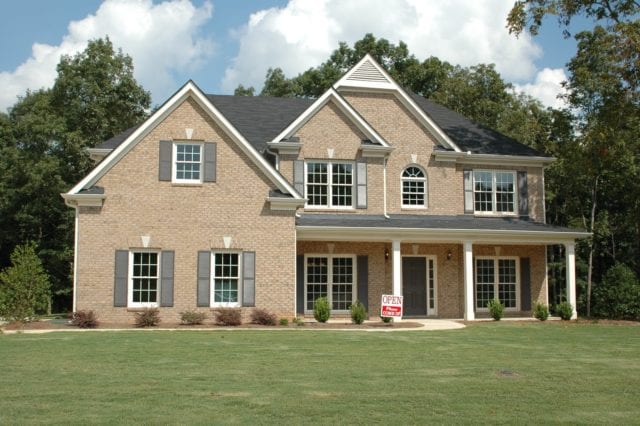
Determining Value For Assets: The sole definition of comps is what the home will sell for on a fair and competitive market.
Other things to consider are the terms and conditions of sale. The sole definition of comps is what the home will sell for on a fair and competitive market, where terms and conditions of sale may affect the terms of that market at the time. If I’m selling a property owner financed, I might be able to sell that property for a premium that doesn’t reflect what a fair and competitive open market would pay for that property. I want to know what the terms and conditions of sales were and other things like off-site warning signs. Meaning if I hopped in a satellite image of this neighborhood, is there something specific to this property that is going to adversely affect the value items, such as is it located on a busy road? If it is located on a busy road, I want to make sure that I use other properties that have sold on this busy road to comp my particular property. If it’s on interior lot make sure you use properties on an interior lot. Other things, does it have electric lines in the backyard? Does it have a water tower in the backyard? Does it side against commercial property or backup to commercial property? Does it backup to a busy road? Are there things that you can obviously see that makes your property different than your comparables that you may want to take into consideration for the value? Do not make the mistake I made when I first got started in investing and bought a property on a busy road using interior lot properties to comp it. That was the first time I lost money on a deal that I learned a big lesson when I did that. Those are some things to consider.
I want to go through a real quick case study of a particular property with you so we can see how I use this system to determine value. I got a phone call from an individual interested in selling their home to replace this with one of his seller note or something along those lines. Nicely remodeled, 2008. It includes an addition, raising the square footage to 1,537 square feet and the bath count to two. I know that this is a pretty heavy remodel. They added onto the home, added a bathroom. There are some pretty considerable things going on there. Seller indicates that the property is not in need of repairs and is willing to accept a discount. That perked my ears. I always like to know that the seller will take a discount from looking to buy something. They’re asking $320,000 for the property and they need to move out as soon as possible.
I’m seeing signs of motivation that this home may be sold at a discount and I still do not know what that discount is yet, but I do know that they’re willing to sell it for $320,000. That sounds exceptional, but what if the home was only worth $300,000? That isn’t that great of a deal, but if that home is worth $400,000, depending on the repairs that the home needs according to visit. It may not need any, but if it’s $400,000 and they’re asking $320,000 for it, that sounds like I might be moving towards a potential deal, but one of the things that I still need to know is what’s the property truly worth in its present condition? I’m going to open up a resource that many people can use to gain access to this information. For those of you in disclosure states, you have sources such as real estate agents and things of that nature that you can use to determine these values, but if you’re investing in some areas like Texas being a non-disclosure state, you’re going to need access to the data which is not typically available through public access.
I am the Co-Founder of a company called Propelio.com. What Propelio.com does is give you access to get MLS comps 24 hours a day, seven days a week. In my opinion, and the opinion of many sophisticated investors, the only true data that you should be looking for when analyzing a property is going to be the MLS. I’m going to show you how you can use Propelio to use everything that I showed you to analyze a property. The property we were talking about was 5014 Purdue Avenue. I’m going to add that property into the system. This is going to pull the tax records and show what’s currently showing on the tax rules. As you can see tax rules are showing this property to be a little different than what the seller told me. Seller told me it was 1,537 square feet. It was a two bed, two bath house and no half-ass and it was built in 1939. That is drastically different than what I’m seeing in the tax rules. I was on the phone with the seller or I was doing due diligence on this right now. One of the first things I would be trying to figure out is why do I have such a large discrepancy between public records and what the seller is telling me? I’m going to save that property.
That property didn’t give me an option to quickly take a look at it from a satellite point of view. Remember I said earlier, we like to look for offsite warning signs, things that might throw indications of discrepancies in value. One thing I’m noticing right now as I’m scrolling through this neighborhood, I’ve got these 1930s-esquecottage homes, little bungalow style homes, but looking across the street I see this ginormous little McMansion over here. It’s harder to see, but if I take a real quick jog down the street, I can see several other McMansions also being built on this exact same street. I’ve got two or three bigger ones right there. As I get further and further down the street, I have more homes. Without even going to the house or doing anything else, I can see that this area is experiencing some re-gentrification of the older homes were being bulldozed and new ones are being built.
Other things I can do is determine if it’s on the interior and exterior lot. I can look for a prevalence of homes with pools in the neighborhood. I can see a couple of homes there with pools, two or three, but nothing abnormal so they may or may not be bringing an extra value into that neighborhood. I feel good with that. This also gives you an ability to track data about this information and assign yourself tasks to follow up on. If I got a lead on a property that I wanted to purchase, I can add that here. Set myself up with some tasks to remember what I need to do next and any other notes that I want to take into consideration for that specific property. I need to figure out what the value of that home is right now and I’m going to click on this button that says, “Run CMA.” What this is going to immediately do is it’s going to look at all of the MLS data in the area that meets these criteria here on the right. What I’ve mentioned before is on the properties plus or minus twenty square foot; the system has automatically done that for me, plus or minus five years in the last six months, within a half mile. The properties that are red are properties that have recently sold. The properties that are white have expired. The light blue ones are active. If I’m looking for comparable properties, I’m going to go and click on some of these ones that have sold.

Determining Value For Assets: There are no blanket statements in real estate.
If I click on this, I can see that it’s a cute little bungalow style home. It’s a little older one. It looks like it’s well maintained. It looks nicer in the front of the house. I can also see is what year was it built. 1941. That’s only two years newer than my subject property. 1,625 square feet, that’s a little bit bigger than mine, but it is also a two bed, two baths. If I click those properties comparable, I can give it a thumbs up or thumbs down based upon my opinion of the look of the home. I can thumb through the pictures and quickly see if the inside of this home matches the quality and condition of the inside of my home. Looking through this, it looks like it was definitely updated. I would also imagine that this may have had a second story addition added to it, which is common into that area. Attic conversions, but it looks cute. It definitely looks like a clean older home. Here in the kitchen if I’m trying to compare apples to apples, this does not have granite countertops. That is definitely a Formica countertop. I’m looking at what appears to be an older dishwasher and mismatched appliances. I don’t see a microwave in there either. This kitchen, although it looks clean, isn’t what we would consider to be updated. This home did take 51 days to sell and it was listed for $445,000 and sold for $426,000. I finally got a snapshot of the stove over there, but if we’re talking about a $500,000 home in DFW. You wouldn’t typically consider this home to be a $500,000 home.
This is an attic conversion. When we look at attic conversions or properties that have a larger floor plan and larger square footage than the average home in that area, what I would typically do is for 100% of the average square footage, I would apply a full value to it. Any deviation from the average square footage, let’s say I’ve got a 1,000square foot home is the average home in that neighborhood and my particular home is 1,400 square foot. For the first 1,000 square foot out, apply full value to that price per square foot and deviating above and below that. I might adjust the price per square foot up or down a little bit to reflect the anomaly with that particular property, but if I thought this was comparable, I’d give it a thumbs up. I’ve got another one around the corner for$493,000. Bathroom looks clean, mildly updated. Backyard looks nice. I’ve got a little pergola. I’ve got a little outdoor seating. It looks nice. What I need to decide is after I’ve seen my subject property, does my subject property truly reflect the condition of these homes? If my subject property does not reflect the condition of these homes, I need to determine what it would take to make my subject property meet these homes. As in what repairs does it need? Do I need to add some new flooring? Do I need to do some painting? Do I need to do some updating?
If I need to do those types of things, then I need to make adjustments to my subject property’s value for the reflective repairs that it made me. If this is comparable, I can give it a thumbs up. I’m always looking for three homes and I’ve only got two sold here. Although I only want homes within the last 180 days max, for my own particular investing reasons, I might go back a little bit further to see what’s happened in the market historically. I’ve got two more homes that have sold over here at $458,000 and another one for $440,000. It’s clean, but I only have two pictures of that property. I don’t directly know why, but it was 33 days on market and it sold for $440,000.Some things that I already know though is that the seller is willing to accept $320,000 for their house. Something I can quickly see by glancing over this information here is that I’m seeing a prevalent number rise through the subdivision and that seems to be that homes are selling on the low side of $420,000 to the high side of about $490,000. I’ve got a seller willing to sell me at $320,000. What I can tell is that I’m probably looking at a reasonable deal here. I’m looking at the average price per square foot of the three homes that I’ve selected here with a thumbs up on it. The average price per square foot is $347 times the square footage of the subject. It says the estimated retail value of this house should be about $485,000. This seller has already expressed to me that they’re willing to take about a $160,000 discount on this property. Needless to say, I went ahead and bought it.
If you notice the tax rules were significantly different than what the seller was telling me. That is because after I bought the property, I decided to go ahead and bulldoze it. I paid $320,000 for the house and I decided it was best case scenario, I should probably bulldoze it. That’s because when we were discussing things that I try to look at, whenever I look at a property, I’m always looking at their highest and best use. If you notice I’m changing up the criteria and although this criteria does not fall in line of the top five things that I’m looking for, such as beds and baths within similar configurations, square footage, year built and distance, all similar. I’m going to show you another thing that I also like to do anytime I’m analyzing a property in that is I want to find everything that’s going on in that particular market. If I do that, then I can tell what is the trend in this market and what I’m about to show you. If you look at this map, I see four sold homes and I only see one active listing. If I changed it up to new construction, large properties like the McMansion that I saw across the street when I was looking at it on Google Street View. I can click search and I want to see how that map changes. You can quickly see that there is what appears to be a market in that neighborhood for new construction, larger million-dollar homes. If I look through this, I see a bunch of $1 million to $1.5 million, high side$1.7 million properties that have sold as well as current listings of new construction properties available for sale.
What I can see by adjusting those criteria is that there’s obviously a demand in that particular market for new construction properties. If I’m buying this as a single-family investment, it might need to be taken into consideration as part of my investment strategy to go ahead and consider new construction as one of my exit strategies. I hope that through this I was able to convey a little bit of value, show you how to analyze a property relatively quickly based upon some tried and true methods to keep you safe. If you have any questions, I’m more than willing to open up and answer any that I can for you.
What percentage of the decrease do you think a busy road penalizes a property by?
I’m always going to give you a universal answer that might seem like a cop out, but I’m always going to say it depends. I don’t want to give a blanket statement because there are no blanket statements in real estate. What I would say though is I would take a look and find all the homes that I possibly could that have sold on a busy road near my subject property, and by looking at that data, I can then determine whether or not the road is affecting the value negatively, positively or not at all. I do know specifically of areas in DFW where there are busy streets, but that busy street is the trendy area. They want to be close to the bishop arts area. They want to be close to those neat little hangouts. The closer they can get to that, the more valuable that home.
I’ve got some main areas there in downtown Dallas where the home is right on the busy road, but that’s what adds the value to that house. All I can say to answer that and say that in a fair way that I wouldn’t mislead somebody is it’s going to depend upon the data you’re able to collect. If I have zero data, then I will always presume that it’s going to negatively affect it and I’m going to assume that it’s going to negatively affect it by at least a negative 10%. That is arbitrary based upon experience and cannot be a blanket statement applied to everything out there. I always get cautious about trying to give blanket answers on real estate because the only tried and true law in real estate that I know of is never lose money.

Determining Value For Assets: The only tried and true law in real estate is never lose money.
That’s why a lot of statements when you’re evaluating notes in deals, we do hit the precise answers by some. I’m not trying to be vague. There are many different individual scenarios that become unique from one detail or two details and they’re not the same.
That’s one thing that I would try and preface is if you are analyzing something and you’re hitting a brick wall, an analysis paralysis scenario where you’re not confident in your ability to determine the value, reach out to a local expert that that has experience in that market. Find a real estate agent, broker or an appraiser that you can reach out to and say, “Can you give me a broker’s price opinion real fast? Can you hit me up and giving me some feedback as to what you think the value of this property is worth in retail ready condition?” Never be afraid to get somebody’s second opinion.
We have a question, “What other functions does the software do?” She’s referring to the sidebar buttons as well.
There are quite a few things that Propelio does. One of them being giving you access to get MLS comps 24 hours a day, seven days a week. Some additional features that this product offers is, let’s say I’m trying to find discounted properties. Since Propelio is a broker’s website and has access to the MLS information, since what I can show you real quick is how to find discounted properties using the system. I’m looking at Dallas, Fort Worth, that’s the area I’m at and I’m looking for single family homes. I’ve got 6,800 active single family homes available for sale in DFW right now. One of those things that sets Propelio apart from using the actual MLS, is the MLS doesn’t say, “Show me of those 6,800 homes, how many of them have a $40,000 discount and are at least 40% off of retail?” By adding those two numbers, I was able to narrow 6,800 properties down to 33 potential properties in DFW that meet my criteria. I click save. It’s going to show these to me on a map. What I’ll do is I’d zoom in here and I haven’t looked at this at all, but I’ll start clicking on some properties. No photos. Estimated value is $332,000 and it’s listed for $150,000.
The reason it’s anticipating that is because of its proximity to this other property. It’s in the same subdivision. They’re both in Delcastle Estates. They have similar beds and baths configurations; except for this one has a converted bedroom or a converted garage. I see here that this is a 4212. This is a 3210.What I’m going to assume is on this property, somebody’s converted the garage. That’s why I have this extra square footage in comparison to this other property. It’s only been on the market one day, but it’s listed for a $150,000 and I’ve got one sold around the corner that albeit is 400 or 500 square foot smaller sold for $280,000.What I would now need to do is go take a look at the condition of the current property, determine what it would take to bring it up to retail ready condition, and then make an offer based on that.
What this algorithm is doing is narrowing down thousands and thousands of properties to the ones that have the highest potential to make money for use a real estate investor. That’s another tool that Propelio offers all at the same. If you’re looking for a website for your real estate investing career, we offer websites now. It’s currently in Beta, if you’d like to take a look at it, you’d have to get added to our Beta test. If I want a website from real estate investing, all I have to do is come here and click create website. I’ll show you how easy it is to create a website for your real estate investing business using Propelio. All I did is you went in there and typed in that little bit of information you can see here. It shows you the analytics for your websites and I’m going to click visit site. In a matter of seconds, I now have a prebuilt website for my business loaded with content. You can customize this with your own logo, your own colors and your own content, but for anybody out there that’s not a tech savvy person, there’s an option for you to get a website for your business without even trying.
I don’t know where you all are currently trying to source your stuff from. I know you’re all looking to buy notes. I personally am more predominantly a single-family investor in the real estate side of it, but if I’m looking to acquire properties through my own marketing. I’m primarily a DFW investor. If I come in here, we have now access to pre-foreclosure properties, affidavit properties, inherited properties like probates. One of the nice things about Propelio that we do differently than any other list provider that I know of is we have a team of virtual assistants, that log-in to the county clerk’s databases daily. Cross-reference all the data supported that day. Cross-reference it, compile, normalize the list and provide to you. By coming here to say, “All I want is properties from today,” we generated 147 new leads from county records for our users today Just in DFW alone. If you look at one of these properties, this property was in a pre-foreclosure status within the last 24 hours. The list we provide are fresh. That is a key benefit to getting deals in a competitive market is having access to fresh data and this is right here’s another service that we provide. Going through that gives you a good understanding of the general use of Propelio, but it does have a lead management attached to it as well.
Here’s another property, 5014 Purdue Avenue. I can come in here and record information about it. I can communicate with my team members. This is a multi-user website so this gives me the ability to track and set up tasks and maintain data for any properties that I’m currently looking at. I uploaded that property as a lead. I’ve gotten it under contract. I was going to move it over to contracts, so now it’s going to do show me all the properties that I currently own that are under contract. It takes through the lifecycle of the process, now if I own it in my portfolio; I can move it to my portfolio. If I’m trying to get rid of it, I’ll go ahead and throw it up for sale and once it’s sold, I’ll add it to my completed folder. It’s a way for me to help track and sort my leads.
Can you give us a link to the software?
Does Propelio have access to all the MLS databases or is it only a limited area?
We are currently in limited areas. We currently serve major metro areas of DFW, Houston, Austin, Miami, Florida, Fort Myers, Florida, St. Louis, Missouri, Chicago, Illinois, Phoenix, Arizona. We are pending release in Indianapolis, Indiana, Salt Lake City, Utah, Corpus Christi, Texas, Waco, Texas, Northern Florida produced the entire panel including Jacksonville, Tampa, Orlando, pending release and we’re in negotiations right now. Please keep my fingers crossed that we’ll have national MLS access by end of the year. Those are forever updating and are our goals by the end of the year. We’re currently in negotiations with a large brokerage to get access to that data. Hopefully by the end of the year, we’ll have national MLS access. If you do want websites for your team, we offer websites exclusively without all the additional package. The website for your business, we can also offer that to you.

Determining Value For Assets: The key benefit to getting deals in a competitive market is having access to fresh data.
Can you can look at rentals as well to see what properties are renting?”
If I come back over here on that particular property, I forgot to highlight that. If I come down here and see sales comps as well as rentals, if I scroll right behind that I hit rentals. As you can see, there’s not a whole lot of new construction rentals going on over there but I do have one that leads to a $5,500 a month. That is your access to seeing your rental comps.
Selling a house in Silicon Valley for $2.7 million, hot market. Do you think landscaping the backyard would detract from the sales price?”
What I’m always going to say, and it does probably irk people from time to time, is it’s going to depend. I know a lot of people that over remodel their homes to try and get top dollar, but what I’m going to say is look at all of the homes that have sold nearby your property and take a look at the backyard, or if the backyard’s beautifully landscaped. If so and yours is not, you may need to landscape your backyard to meet what the current demand in the market is saying. If you’re looking at all of them and they have zero landscaping, I would not anticipate putting much money into my backyard because I don’t directly understand that it would return its value, add at least a 1:1 scale. As an investor, when we’re looking for at least a 1:1.3 scale I’m wanting to make at least $0.30 on every dollar I spend. If I didn’t feel like I could make that happen in my backyard then I wouldn’t invest the money into the landscaping, unless my comparable properties indicates that that is what I need to do to meet what my market wants.
With Propelio.com, we are doing live podcasts Monday, Wednesdays and Fridays where we release quality information discussing the single-family investing arena. We do case studies, we do in-depth actual teaching, it’s not reservations, we do go through and teach as much as we possibly can. For those that would be interested in possibly learning more from Propelio and learning more about the single family investing side, check us out on our podcast. You can find us on Facebook.com/PropelioApp or you can get us on YouTube at Propelio.TV. If you are interested in getting more education, similar to what we have provided talking about the comps, we literally have dozens of prerecorded content that we are about to release on what we’re going to call The Propelio Academy. This is going to be free of charge. We’re not selling these courses, but if you are interested in getting some more knowledge to throw in your tool belt, make sure to keep an eye out for us on Facebook. Go subscribe to our Facebook page there and when we release The Propelio Academy you will be notified.
What is your Facebook page again?
How updated is the software as compared to the MLS?
From market to market vary, but most of them are updated every fifteen minutes. Some in Molasses do not allow us to update that often, but most of them are updated every fifteen minutes. One of them requires us to update every 24 hours and then most of them are updated every fifteen minutes. Anywhere between fifteen minutes to 24 hours we update. Different rules, different providers.
When can we expect to free software?
It’s free. You can go out there as we speak right now and get your first seven days for free. There is no charge. If you want to go out there and play around with it and see if it’s something that you want to add into your tool belt. I know that there are a lot of people that get deals from their system daily and know if you’re interested in trying it out, seven days for free, no charge. If you like it, keep it. If it’s not for your investing model right now, cancel and it’ll never cost you a dime. I believe in the product that we provide in. If you take a look at it and you like it, keep it. If not, no contracts, no startup costs. Have a good day. I look to see you again in the future.
Daniel, is there anything else about the podcast or anything that you wanted to touch on?
What I would say is check out the podcast. Probably we’re up to a couple hundred thousand views now quite regularly. We’re putting out as much quality information as we possibly can. That way you get more value from us in our product. I look forward to serving more people with more product.
What is the name of the podcast again?
Right now it’s strictly on Facebook, but we call it Propelio.TV. If you go to Propelio.TV, that’ll take you directly to our YouTube channel, or if you go to Facebook and check out our Propelio app, that’s there, but as soon as we get our systems in place, we will be converting it all over the podcast style. Where it will be available on iTunes and stuff like that, but if you subscribe on the Facebook, you will get notified and update it as we go through all that.

Determining Value For Assets: You may need to landscape your backyard to meet what the current demand in the market is saying.
I was just going to ask you if you guys had made the leap yet over to iTunes, Stitcher or whatnot, that’s good to know.
We are on iTunes. We haven’t stripped all the audio and set up table of contents and released it yet.
It’s a lot of good information you guys.
I hope to have brought some value to you. If you’d like to follow me personally on Facebook, search for Daniel Chad Moore on Facebook. I accept friend requests regularly and look forward to being able to serve you all.
We do too. Thank you so much.
Important Links
- Daniel Moore
- Rich Dad Education
- Propelio.com
- Propelio
- TV
- Facebook.com/PropelioApp
- The Propelio Academy
- Daniel Chad Moore – Facebook
- WeCloseNotes.com
- Scott Carson Facebook
- Scott Carson Twitter
- Scott Carson LinkedIn
- We Close Notes YouTube
- We Close Notes Vimeo
- Scott Carson Instagram
- We Close Notes Pinterest
About Daniel Moore
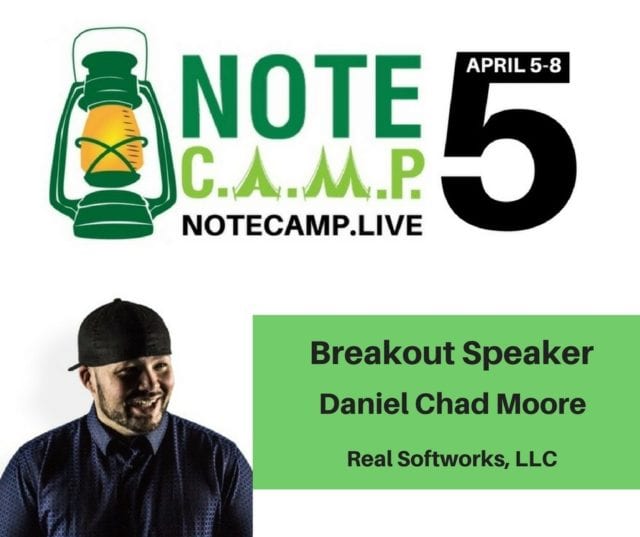
At the age of 23, with nothing but determination, Daniel Moore bought his very first investment property. He has since taken those lessons learned and by the age of 28 became a full time investor.
Before real estate Daniel worked in the construction industry designing robust automation systems for complex class “A” high rise buildings. It didn’t take long for his knack at automation to begin trickling into his investment portfolio.
In 2012 Daniel opened the doors to i35HomeBuyers and stepped away from his day job. With the very same determination that got him through his first rehab he has since moved through hundreds of properties and started several other companies.
In 2014 Daniel teamed up with his business partner Nate Worcester and founded Real Softworks, LLC, a software service company with one goal in mind, to help other investors grow.
Nate, being an expert in the software development industry, reviewed the systems used in Daniel’s business daily, and helped turn them into a very simple turn-key real estate automation software. The result of their combined efforts is an extremely powerful real estate automation system called Propelio.

